Students Share Design Ideas for 24 Sussex Drive with NCC

24 Sussex Drive, Photo: National Capital Commission (NCC)
What to do with 24 Sussex Drive, the official residence of Canada’s Prime Minister, has been a question for years.
Prime Minister Justin Trudeau chose not to live there when first elected in 2015, leaving it open to renovation or replacement. The National Capital Commission (NCC), custodians of official residences, has been considering options since. The house remains empty, its future unclear.
In collaboration with the NCC, a group of Carleton University architecture students has studied the house and site and created a series of preliminary designs. They presented them to NCC officials, who are sharing them with those responsible for developing solutions for the rehabilitation of 24 Sussex.
“I am very impressed with these innovating and most creative projects produced by the students,” says Greg Kenney, Vice President, Official Residences. “These projects will provide inspirations for the real project that is being managed by the NCC.”
Adjunct professor Lyette Fortin led the 14-week design studio in winter 2020. She is a conservation architect who, before teaching at Carleton, was one of the people responsible for official residences at the NCC. The 14 students were in their third year in the Conservation and Sustainability stream of the undergraduate architecture program.
“The Azrieli School of Architecture & Urbanism always strives to have students take on challenging projects in the national capital region to positively contribute to the community’s built environment,” says Fortin. “This project focuses on the application of heritage conservation approaches and sustainability concepts.”
The house has many shortcomings. Despite its size, it is short on the spaces needed for its twin vocations as a family home and as a setting for official receptions. The stone building, built in 1868, has undergone many changes to its appearance. The interior remains uncomfortable by contemporary expectations of climate control, privacy, daylight, and universal accessibility. Issues include security, mold, and asbestos.
“It was a unique experience overall because the site is such a recognized location in Ottawa,” says student Angela Jang. “The biggest thing that I took away from it was the way our whole studio approached the discussion of Canadian identity and how we showed that in a sense of place.”
The residence is designated a Classified Federal Heritage Building for its association with the 11 Prime Ministers who have lived there since it was acquired in 1951. Before them, it was home to three of Ottawa’s lumber barons.
Maureen McTeer, wife of former Prime Minister Joe Clark, spoke to the students, providing a unique glimpse into what it’s like for a family living at 24 Sussex. Her observations regarding a shortage of bedrooms and lack of separation between the private, public, and staff quarters informed students’ space planning for the project.
“The students explored the ongoing debate on whether to demolish or to rehabilitate,” says Fortin. “Their projects bring new perspectives to issues and challenge current views with original ideas and innovative, creative solutions.”
A 2018 NCC report said the 150-year-old home is in “critical condition” and suggested it needs an investment of $34.53 million. To replace it would cost an estimated $38.5 million.
The public debate has been dominated by cost on the one hand and effectiveness as an official residence on the other. The choice has been presented as demolition for replacement or renovation. The fact that the house in its present form is not a strong example of heritage style or a good contemporary residence is used to advocate demolition.
Fortin invited students to consider all options and base their proposals on understanding the history of the house and its site, beginning with Indigenous peoples before European settlement. She notes that the residence sits on unceded Algonquin territory.
The project had three phases: the first devoted to research to understand the history, the context, and the needs of the residents; the second, to develop a vision and concept rooted in the understandings and the third, to propose a preliminary design, adding thought for sustainability.
Most of the resulting projects consist of the rehabilitation of the existing building plus a new addition to address the requirements of the official residence. Some students decided to separate the private functions of the family within the existing building and build an addition to accommodate public events. One project deconstructs the residence and rebuilds it using the material to achieve a sustainable design solution.
“It was a unique experience overall because the site is such a recognized location in Ottawa,” says student Angela Jang. “The biggest thing that I took away from it was the way our whole studio approached the discussion of Canadian identity and how we showed that in a sense of place.”
The projects demonstrate approaches that give value to cultural history. They are more concerned with respecting Indigenous history than architectural style books. They reflect concern for the landscape, conservation of the house, and removal of inappropriate additions. They meet new needs with new construction.
“The students’ projects demonstrated that there are many values associated with the property – Indigenous, the former lumber barons and the Prime Ministers who resided there, as well as environmental and contextual values,” says Fortin.
“They also demonstrated that there are ways to rehabilitate the house adding a new architectural layer to preserve the heritage values, but as well, introduce new innovating sustainable features,” she says. “Some pushed the traditional conservative conservation approach to propose daring contemporary additions to a designated heritage property.”
The NCC provided the background information. Everything had to be vetted by the RCMP. Art Marcotte, director of operations; Benoit Séguin, property manager; and Heather Thomson, manager of heritage programs, participated in person as guest critics in the first two reviews of the project. A final virtual presentation to 16 NCC representatives took place in July 2020. Students Hope Good and Marleine Ovemurai thanked the NCC for “the project of a lifetime.”
The NCC says it “continues to work with its federal partners to develop a plan for the future of the official residences and of 24 Sussex Drive.”
Here are the seven projects presented to the NCC.
Tying 24 Sussex Together
Angela Jang and Lauren Johnson
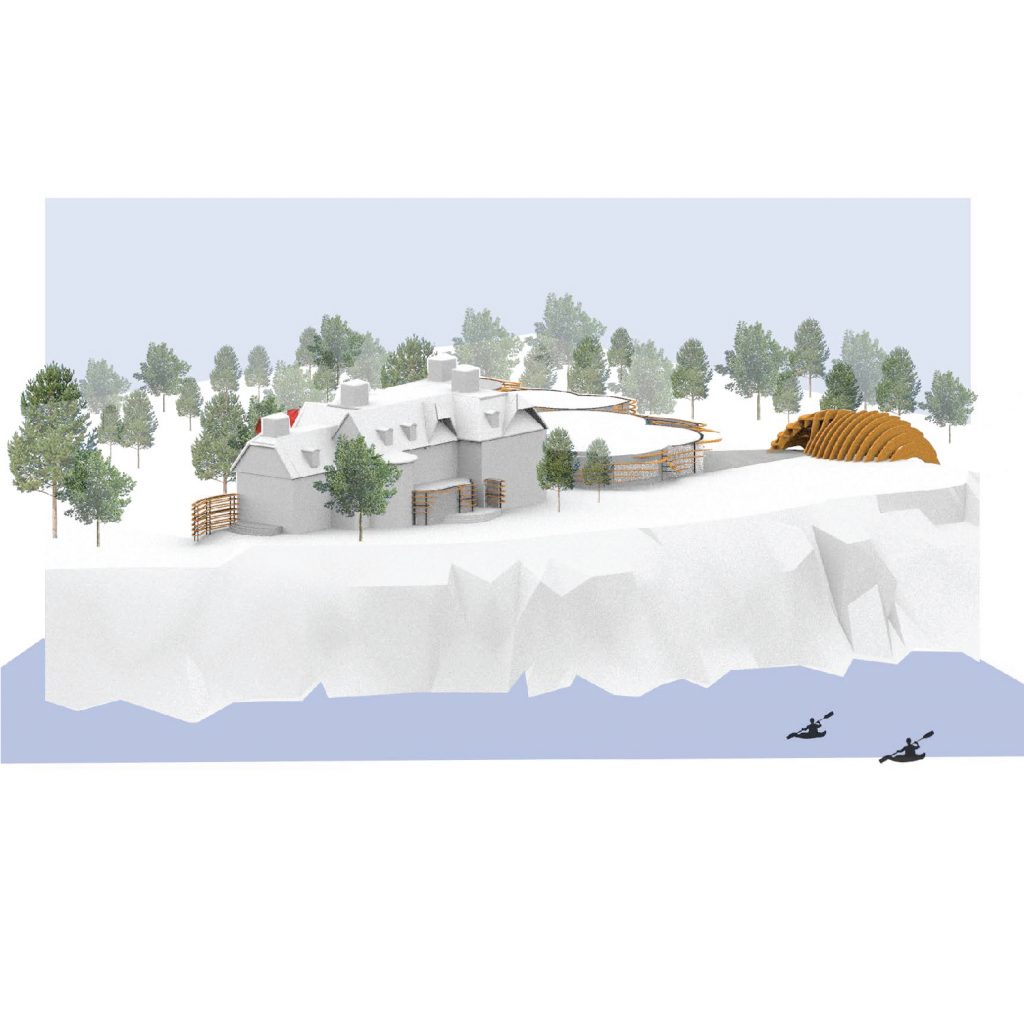
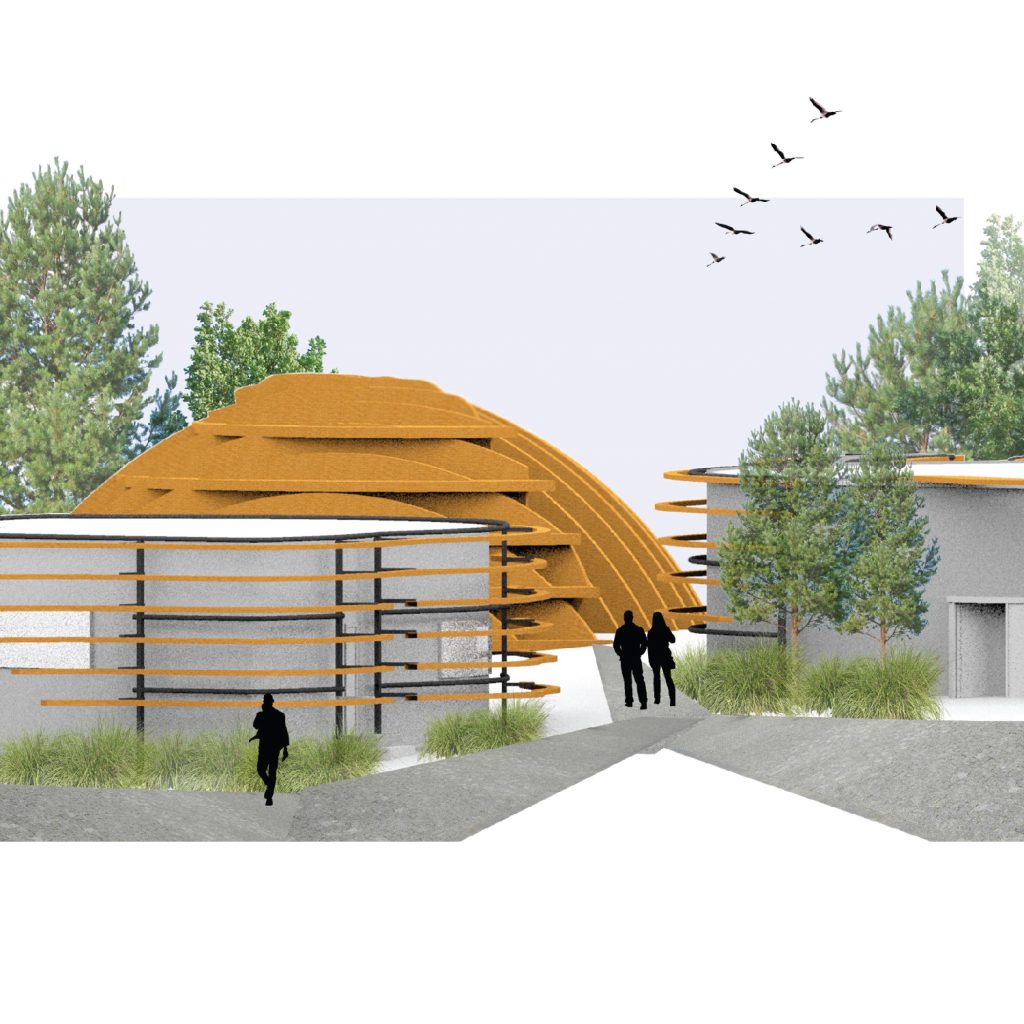

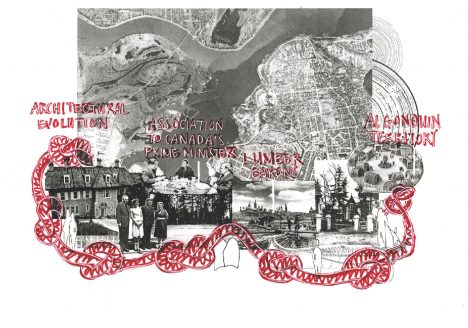

Tying 24 Sussex together aims to create physical, cultural, and historical connections between the accumulated narratives and functions of the site. The current residence is not only in a state of decay but also lacks a sense of home, proper circulation, and space. The proposed additions, as well as the rehabilitation of the residence, aim to fix these concerns — separating official functions from the private residence, creating more space and a dynamic flow – inspired by a knot. The concept of a knot drives the need for connections and bringing things together — guiding massing design, material selection, and overall flow of the site.
Revitalize
Hope Good and Marleine Ovemurai

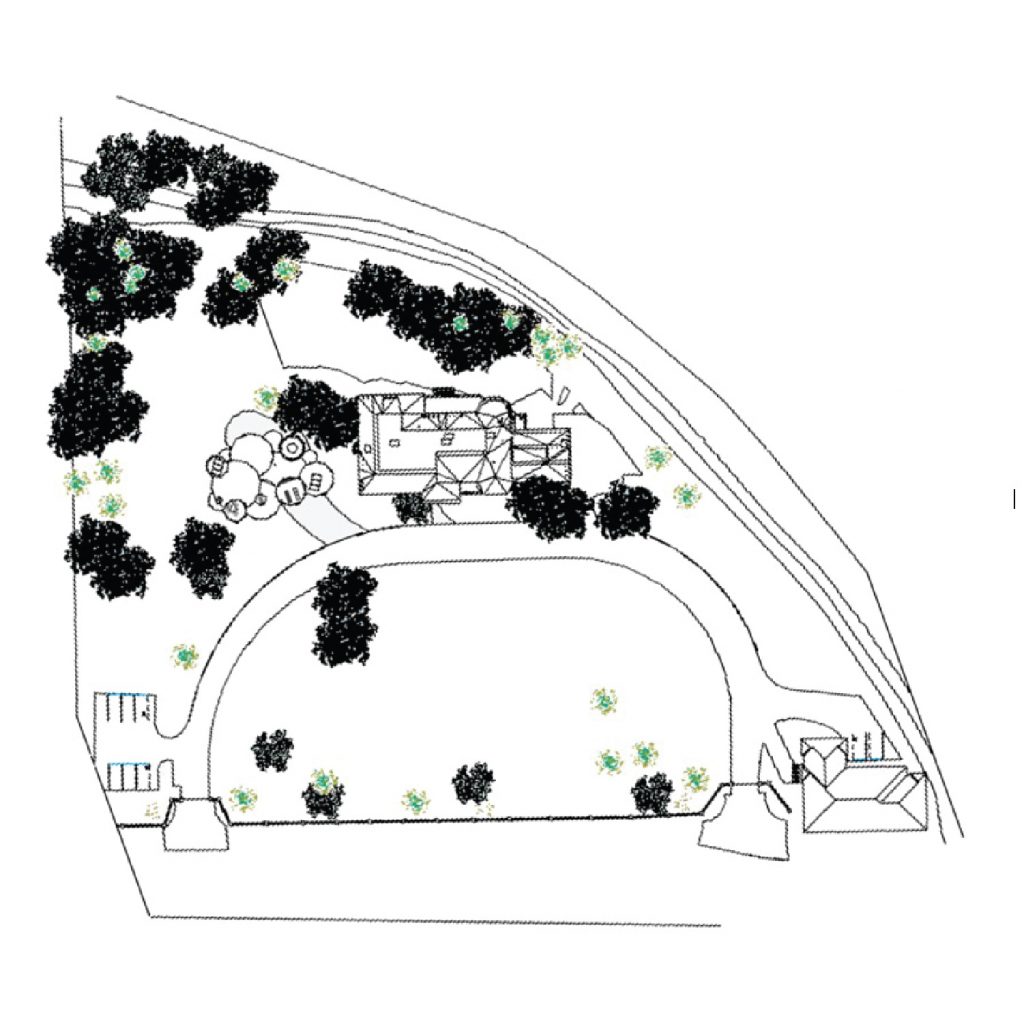

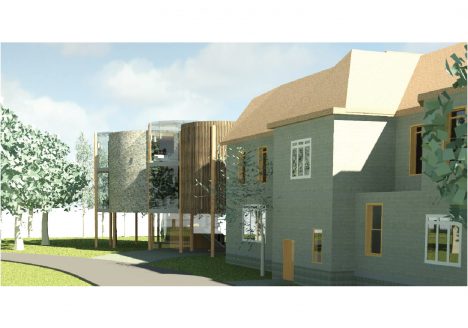
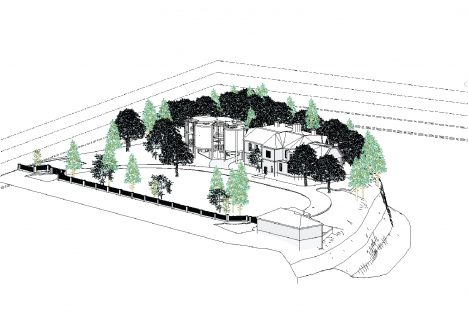
This project removes all structures on the site apart from the main residence and coach house. It separates public and private uses with a convertible addition for events catering and relocates staff residences to the restored coach house. It plants additional trees for safety and privacy. The main level of the house is designed as a multifunctional open space with a new private entrance toward the rear and an elevator. Rehabilitation of the house includes reparation of damage to the building envelope and updated electrical and mechanical systems to improve building performance and comfort.
Wampum
Jessica Babe
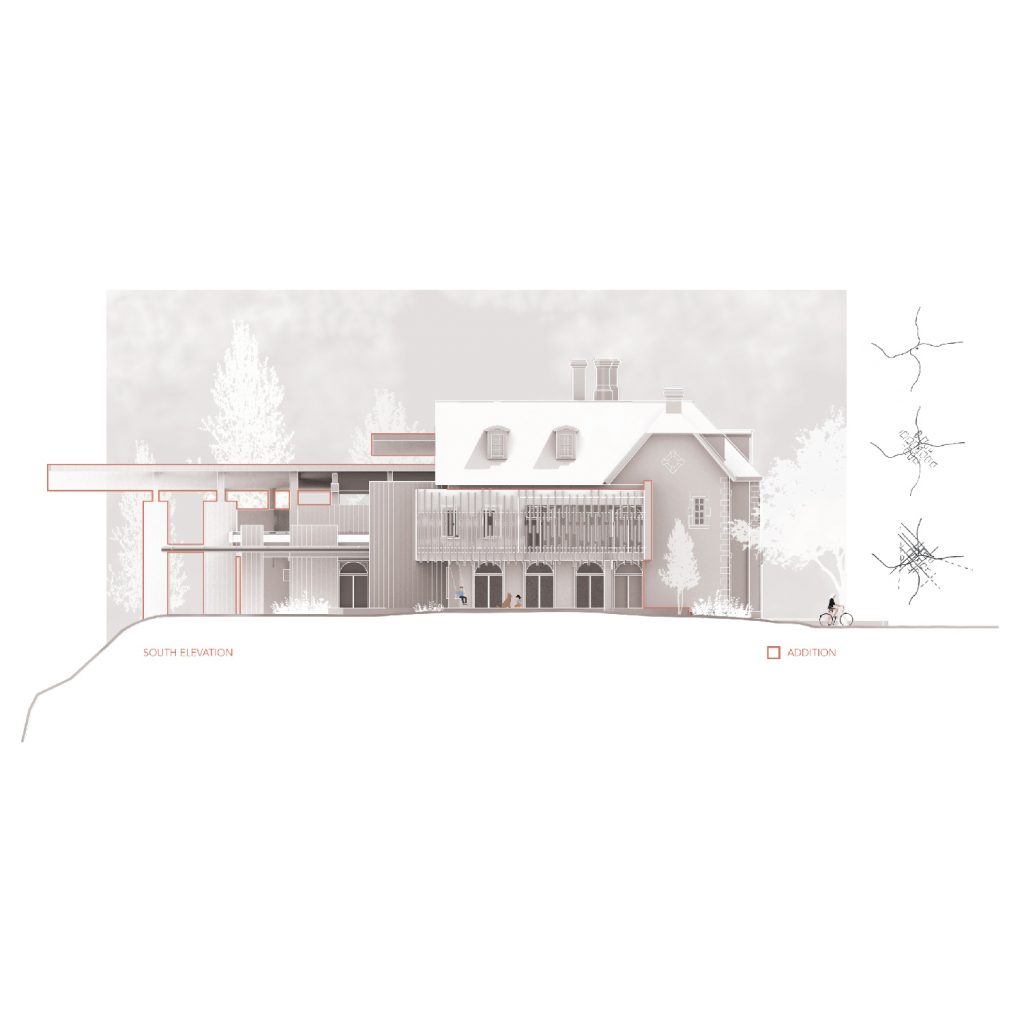
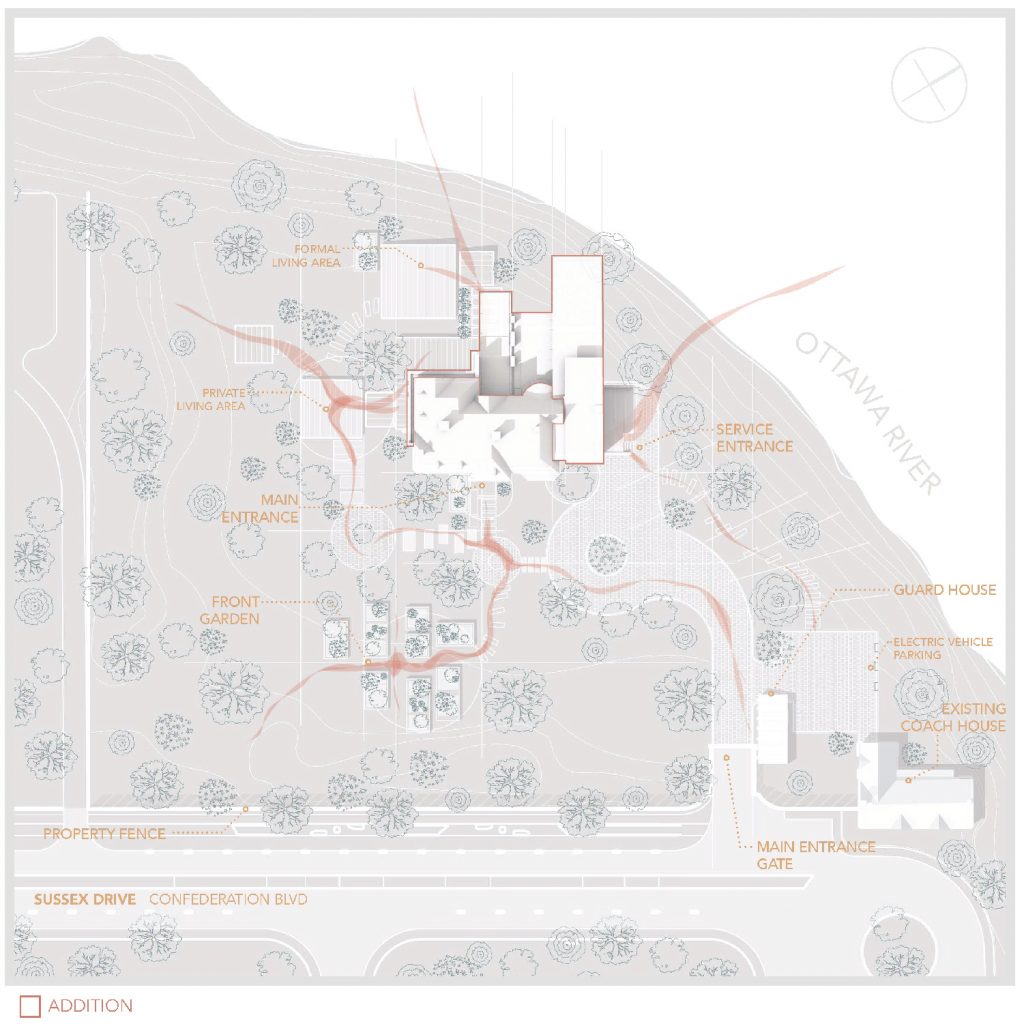
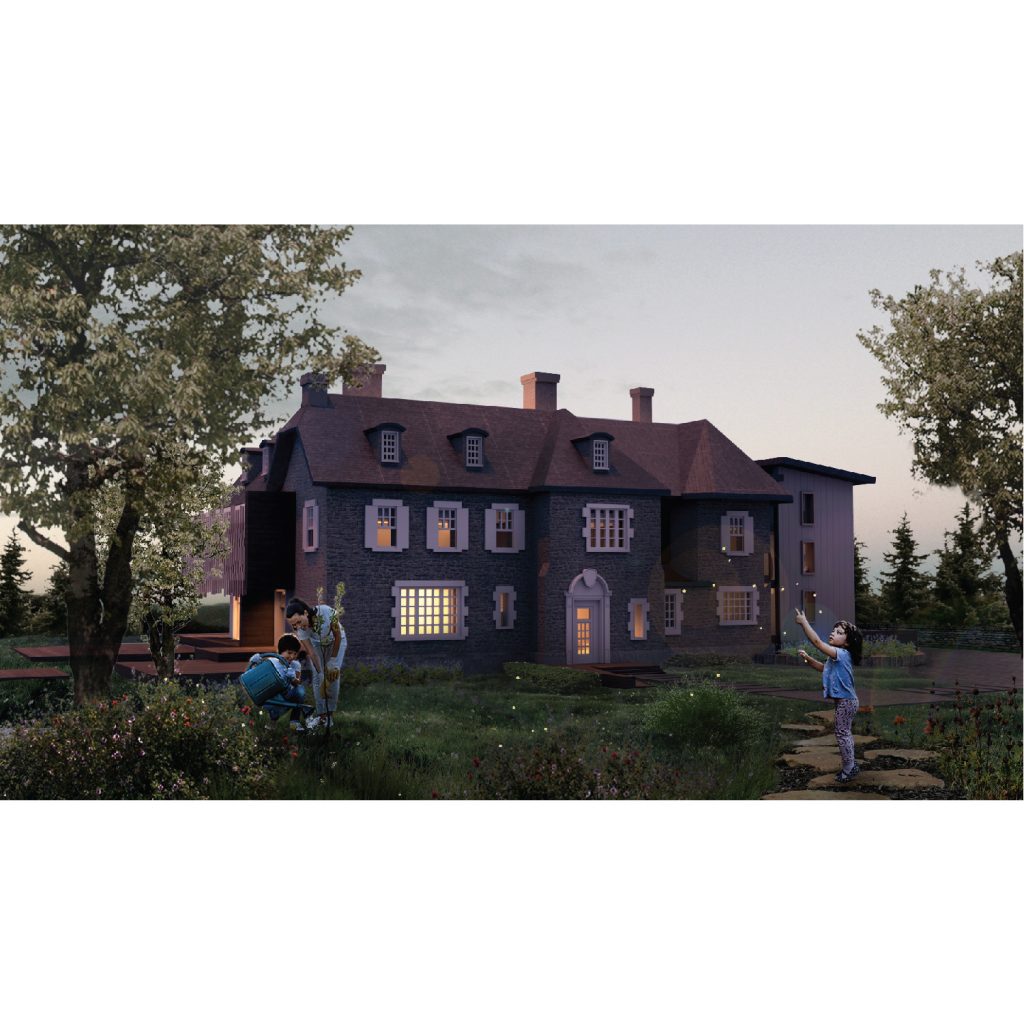
The vision for this project is to create a space for coexistence, a common theme regarding the use of the Wampum belt throughout history. The intervention to 24 Sussex introduces a new architectural expression to the residence while respecting the site’s tangible and intangible character-defining elements. The addition comprises long horizontal lines and simplified forms that extend the residence into the picturesque landscape. Skylights bring in maximum natural light. The plan uses parallel paths of travel and multiple entries to allow separate access into the private, formal, and service spaces. The free plan of the formal dining and living rooms allows either room to extend into each other to accommodate larger groups of people as needed.
Sweep Stroke (Arc)
Mary Hanna



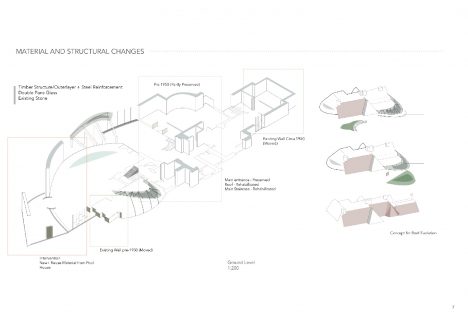
Embodying the Sweep Stroke movement of a paddle allowing for turning points and a forward progression, old and new thresholds will be distinguishable on-site, and contemporary values introduced to revitalize the meaning behind 24 Sussex. This rehabilitation and expansion proposal deconstructs the residence and rebuilds it using the material to achieve a sustainable design solution. The addition has an organic roof design in a sweep motion. An outdoor pavilion and walkways shape the site. Vertical ribbing and organic shape pay tribute to the wigwam. The space inside the house is reconfigured for better functionality. The project adds a better performing building envelop, integrates new mechanical systems and preserves the embodies energy by recycling the original materials.
Intertwined
Mélina Grandmont and Reem Siage
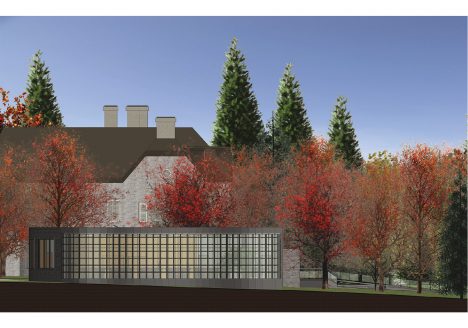
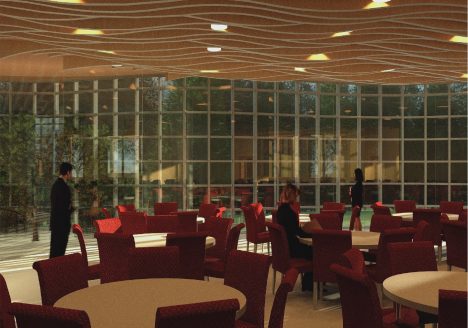
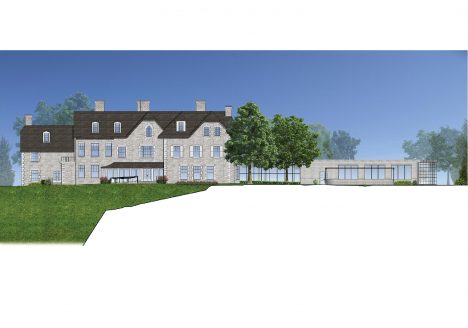
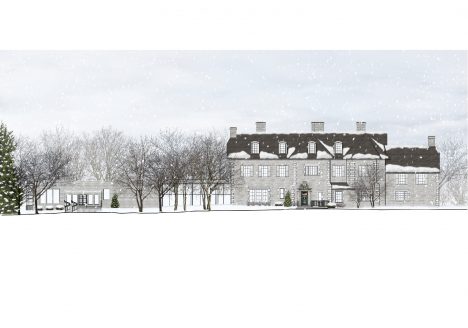
This project seeks to intertwine Indigenous and Canadian values on the site of 24 Sussex. The project separates private and official functions with a new addition to host official events. The grey masonry echoes the stone of the original building. Curtain walls increase daylighting as a passive sustainable strategy, and its curvilinear forms reflect indigenous values in architectural design. The ceiling design of wooden portions with curved profiles was inspired by the movement of wood logs on the river during the lumber trade. An Inukshuk on the site adds Inuit symbolism. Curvilinear pathways leading to the gathering space behind the addition are made of locally sourced granite, some carved with symbolic imagery.
Aurora Borealis
Christopher Armstrong
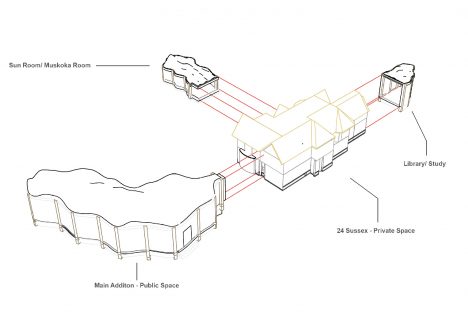
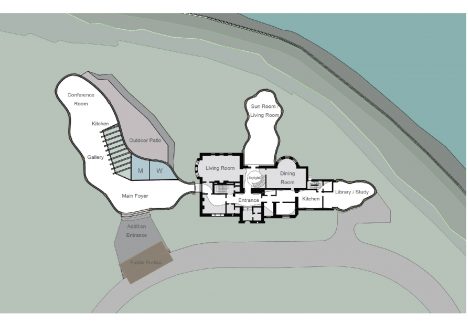

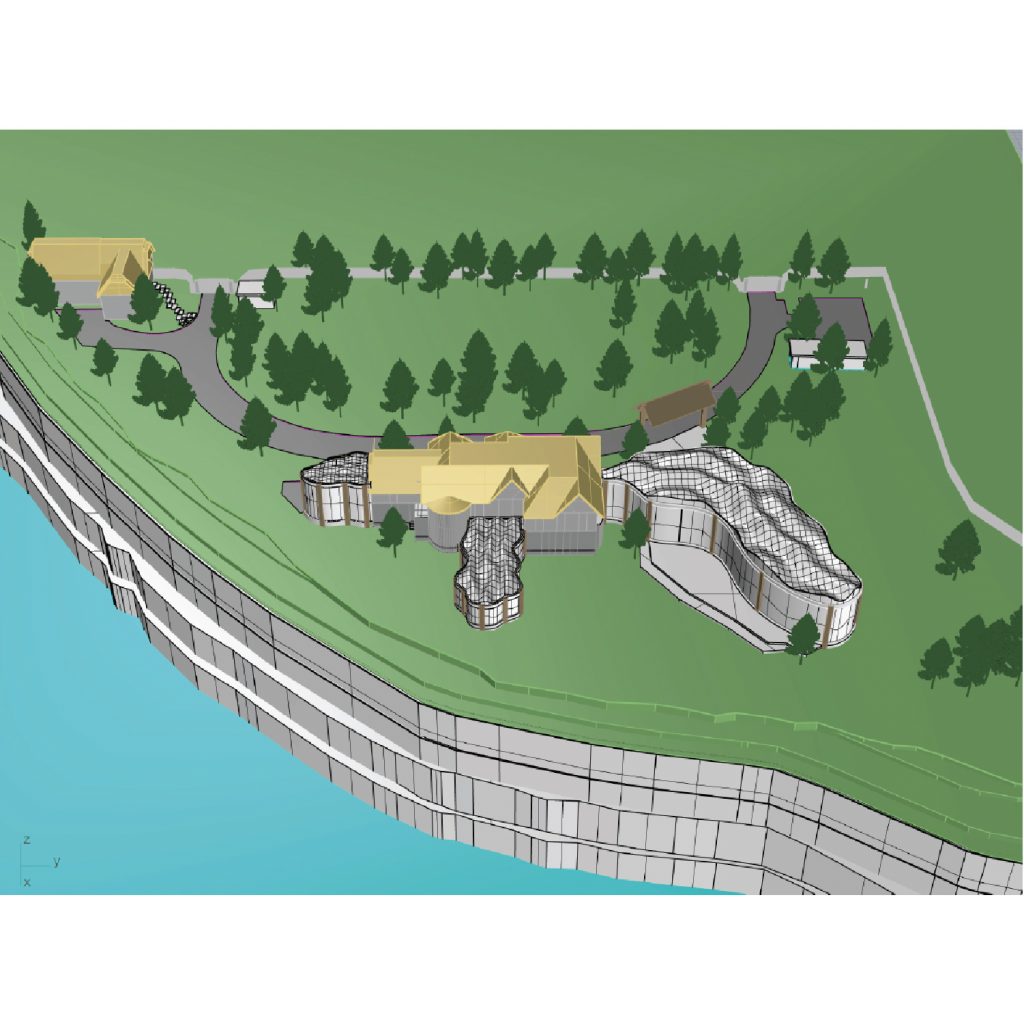
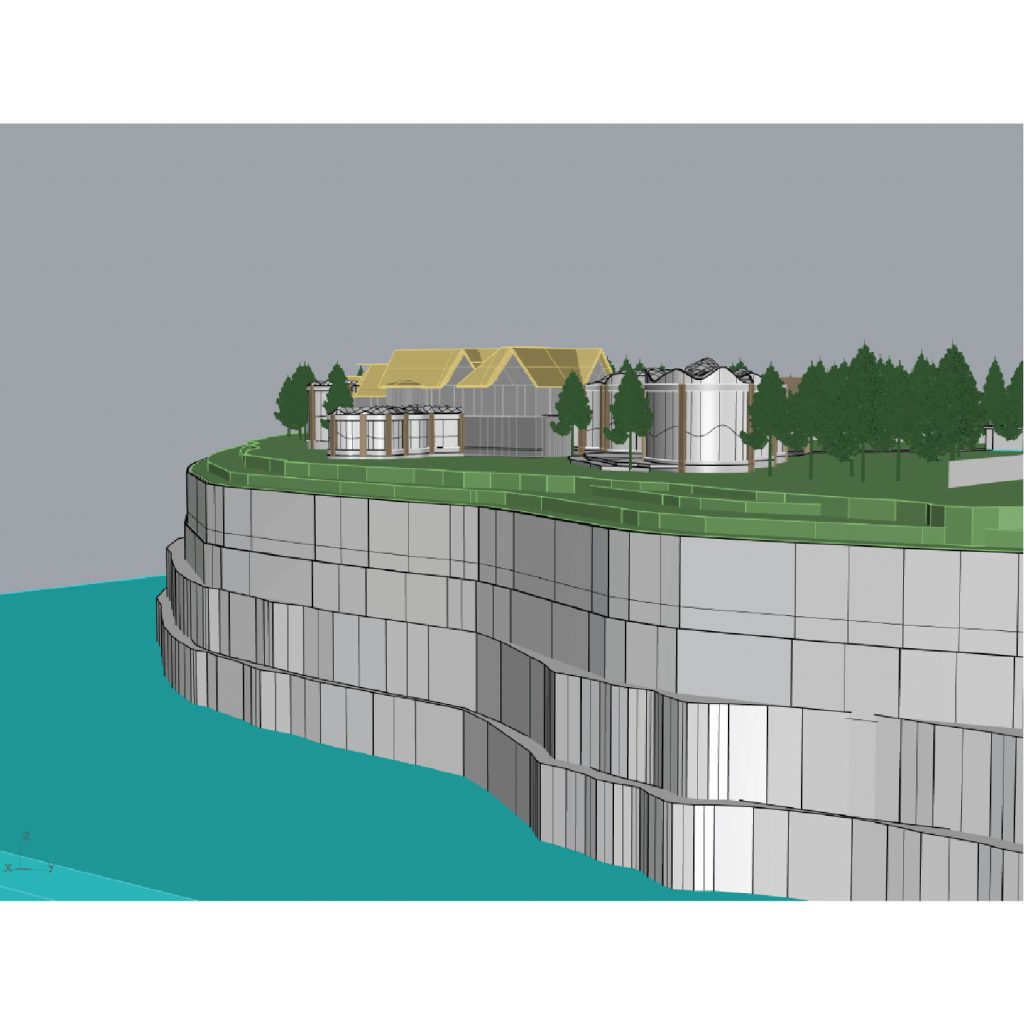
Aurora Borealis represents the convergence of Canadian cultural values into one collective space. The addition to 24 Sussex seeks to reference the site’s historical significance while representing Indigenous values and implementing a natural connection to the Canadian environment. Light plays a considerable role in the design, entering through skylights and curtain walls. The open concept of the west addition intends to bring visitors and guests together into one communal space, removing theoretical walls and converging cultures together. The north and east wings are for private purposes. The organic curves of the panoramic sunroofs and glass walls represent the undulating form of the Northern Lights.
Spiral Evolution
Clarisse Miranda
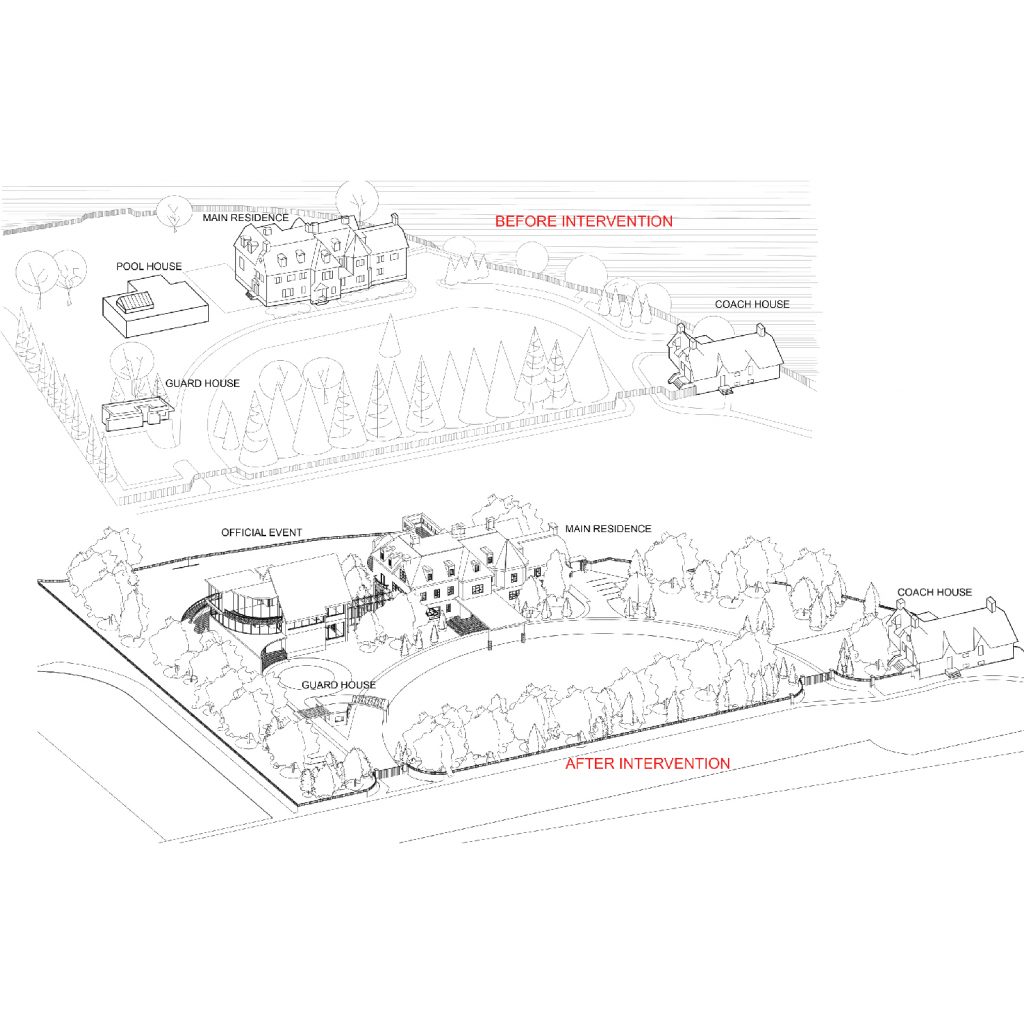


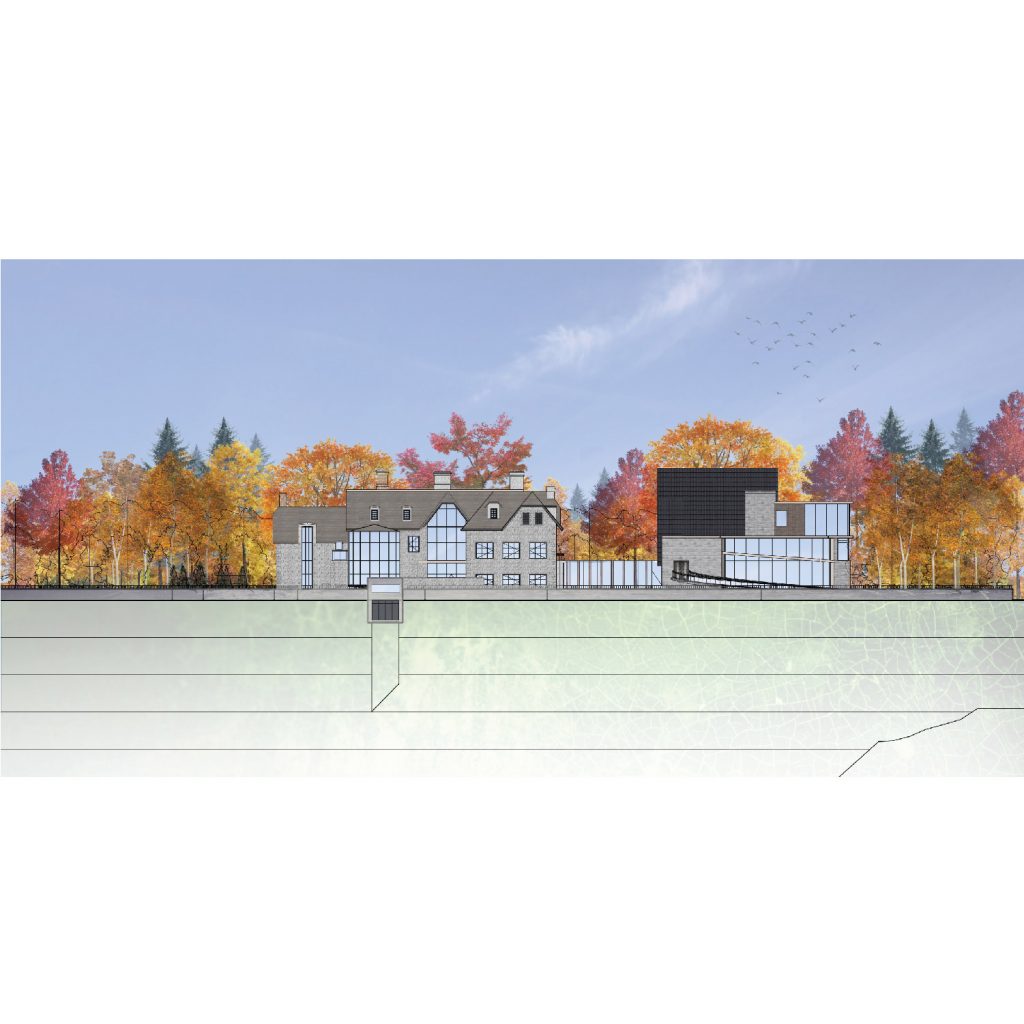
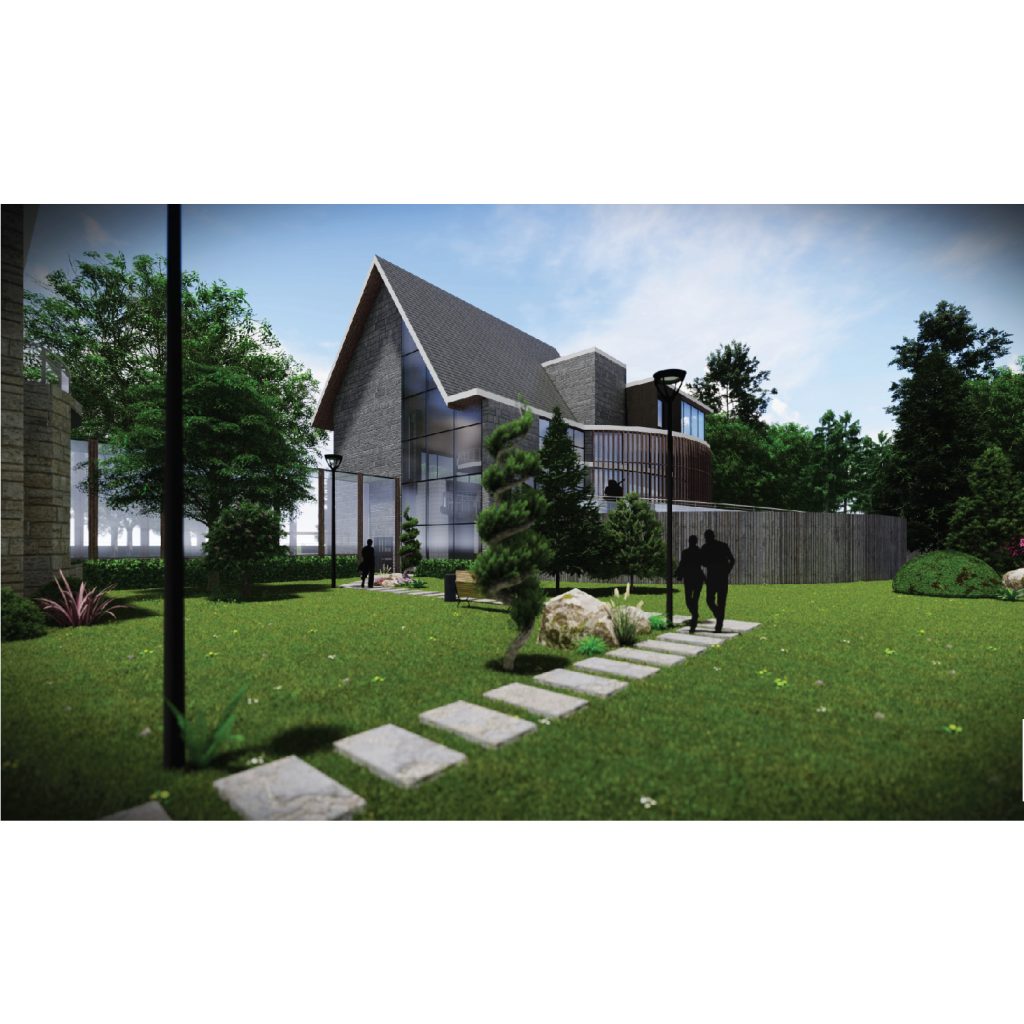
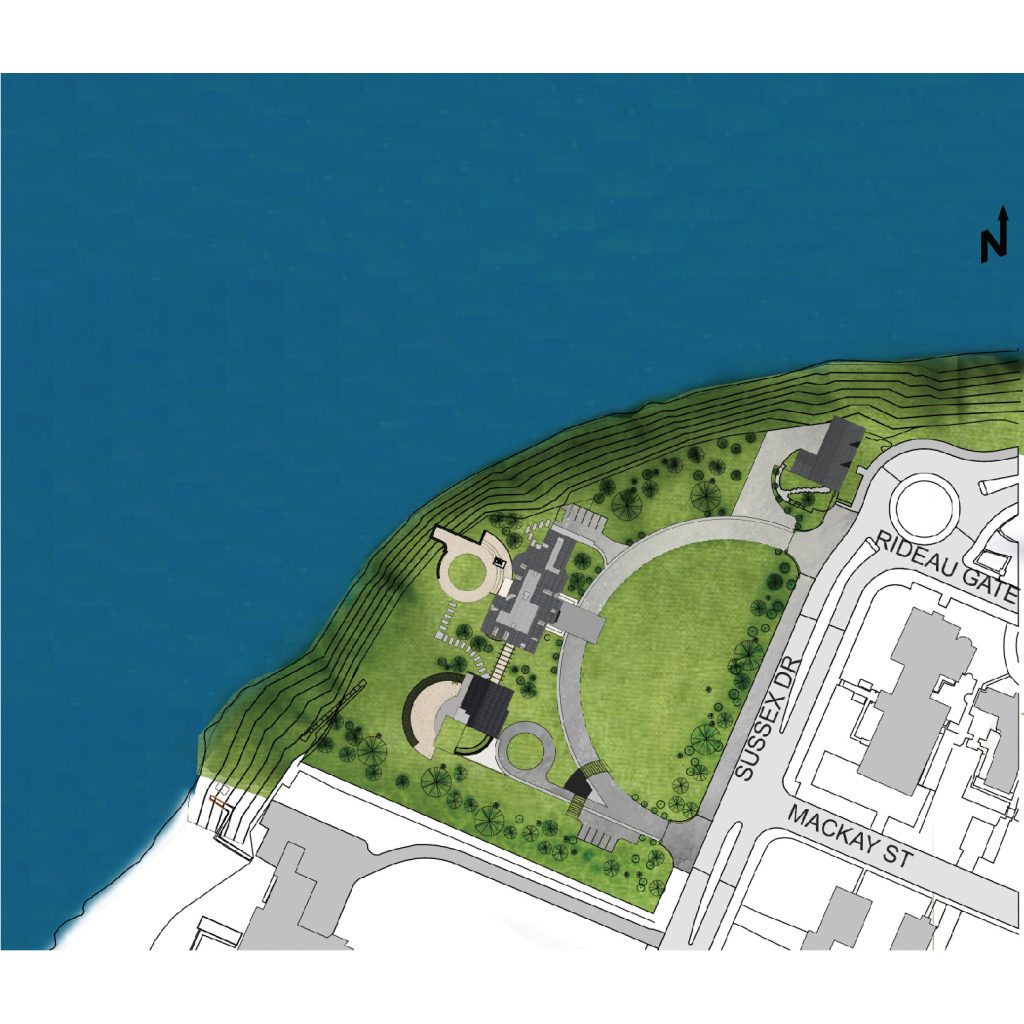
The spiral stems from the confluence and the flow of the three rivers, Ottawa, Gatineau, and Rideau. The evolution represents the history of the site from the Indigenous to the present and future. The spiral ramp symbolizes the path of a journey to lead the peoples of Canada to a better future. Canada is represented in the building’s choice of materials and design elements. The abundant green space is reflected in the building’s green roof and mixture of trees surrounding the site. Local materials such as birch, oak, and limestone are chosen to reveal the natural resources of the country.